Tortilla, tranquila, tequila: Six weeks in Santander
My first six weeks of living in Santander have been eventful to say the least, and I’ve finally had the time to sit down and put it all in writing.
Pulling into Santander’s bus terminal - now six weeks ago - was an underwhelming experience. After over 36 hours of travel, the first thing I wanted to do was have a hot shower, and immediately follow that with the welcome embrace of a warm bed. Apparently, at four o’clock on a Tuesday afternoon, Santander’s locals were also on the same page. The city, like myself, was dead on arrival. Deserted. A stark contrast to the hustle and bustle that I knew would have been thrumming through Sydney at the same time (approximately ten hours earlier).
My knowledge of northern Spain, especially at this stage, was limited to La Riojan wine and País Vasco’s Gaztelugatxe - also known as Dragonstone to Game of Thrones fans, minus the CGI. In the days and weeks and months leading up to my departure from our sunburnt country, I’d been peppered with questions and observations about life in the land of rabbits; varying clichés ranging from climate and landscape to gastronomy and auditory volume. Already in the six-hour drive from Madrid to Cantabria’s capital, I’d seen levelled towns nestled among Herculean snowy mountains. I had put my jumper on and taken it off three times. I knew my food and wine journey would soon begin - particularly with an impending visit to San Sebastián - but I was not expecting a country that had been described as vibrant and lively to be so quiet. Of course, I knew in theory that la siesta is practiced throughout the Mediterranean and Southern Europe (and due to Spanish influence, the Philippines and some Hispanic American countries), yet seeing it in-person in a naval trade hub as large as Santander was jarring.
Anna & I at Gaztelugatxe, versus Game of Thrones' Dragonstone.
The following few days were filled with absolute misery, even though I was wine-drunk for most of them - was this what I should expect from Spain’s drinking culture? I had no food, no heating, and no concept of how time worked in what felt like a frozen vortex - because, yes, unlike how it’s represented in Freddie Mercury and Montserrat Caballé’s Barcelona, Spain experiences a chilling winter. Orientation began every morning at 9am, just before the shops opened for the day. We’d stop for “lunch” in small towns usually at around midday, which would be when la siesta began. Kitchens would close, but the locals who chose not to go home would lounge around with a beer or wine in-hand, maybe with some cold pinxos if they were lucky. Having been unable to go to the grocery store, I’d not had breakfast, and apparently wouldn’t be having lunch either save for a glass of wine or beer, which was almost always at least two euros cheaper than a bottle of water.
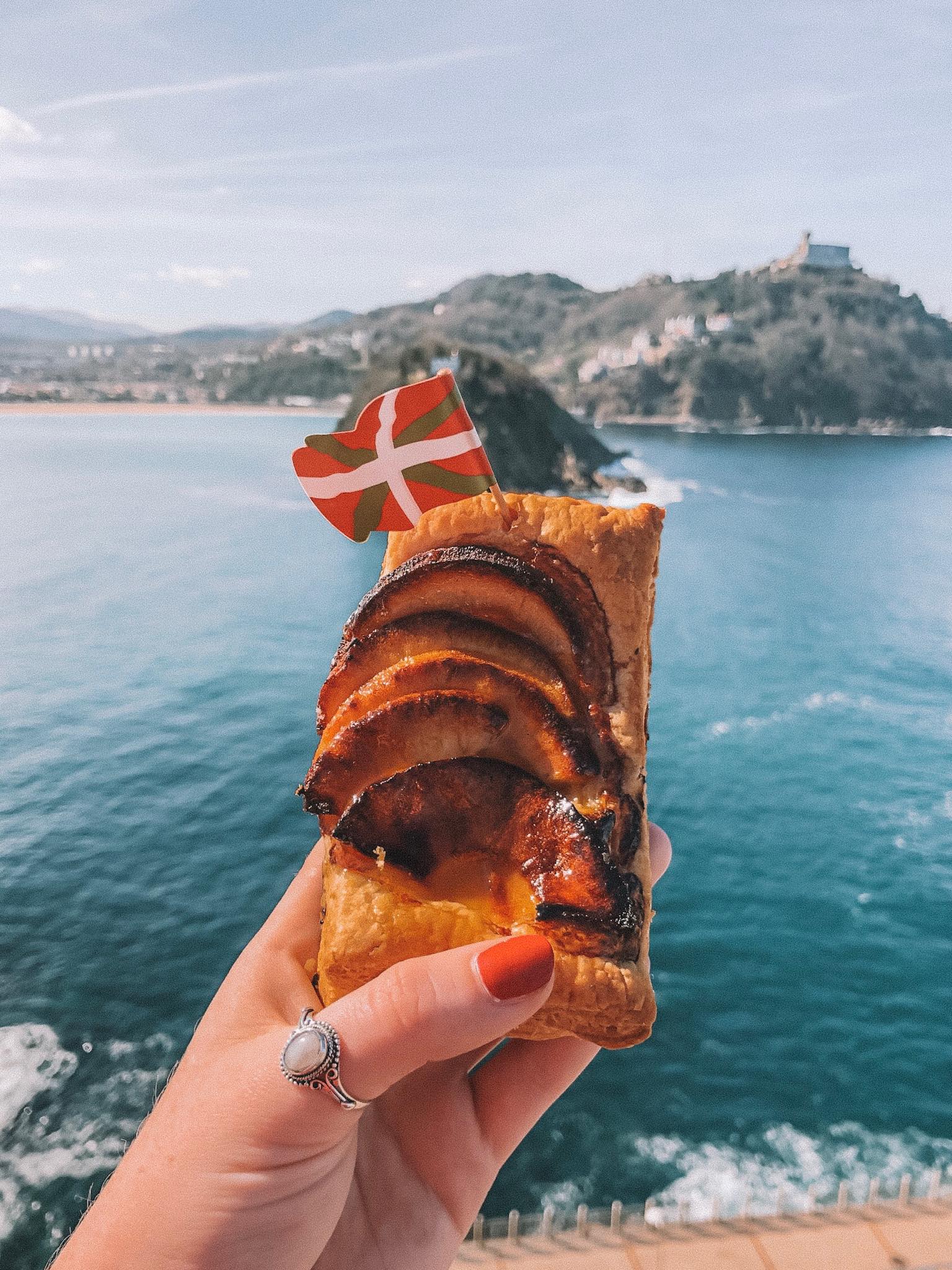
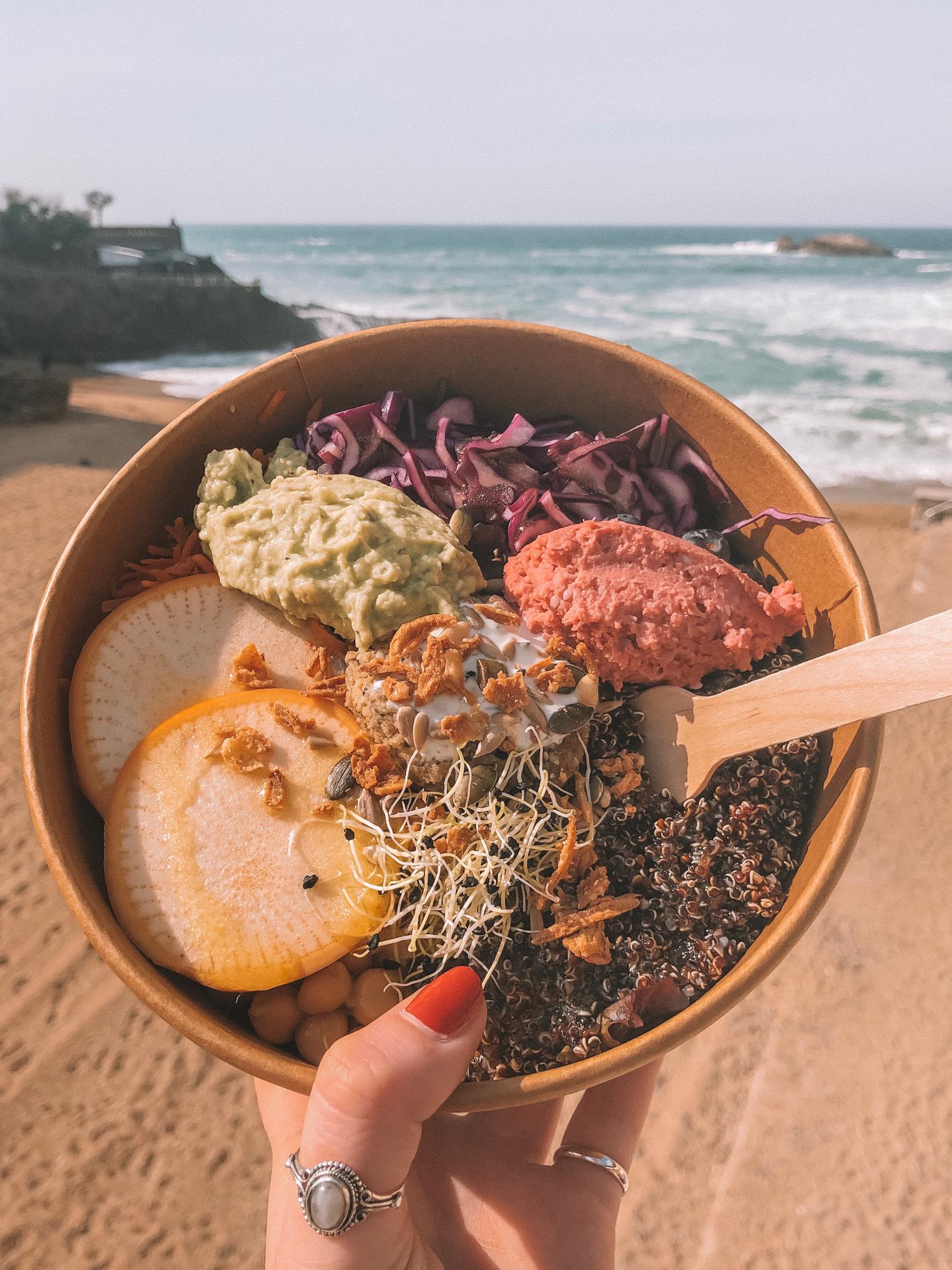
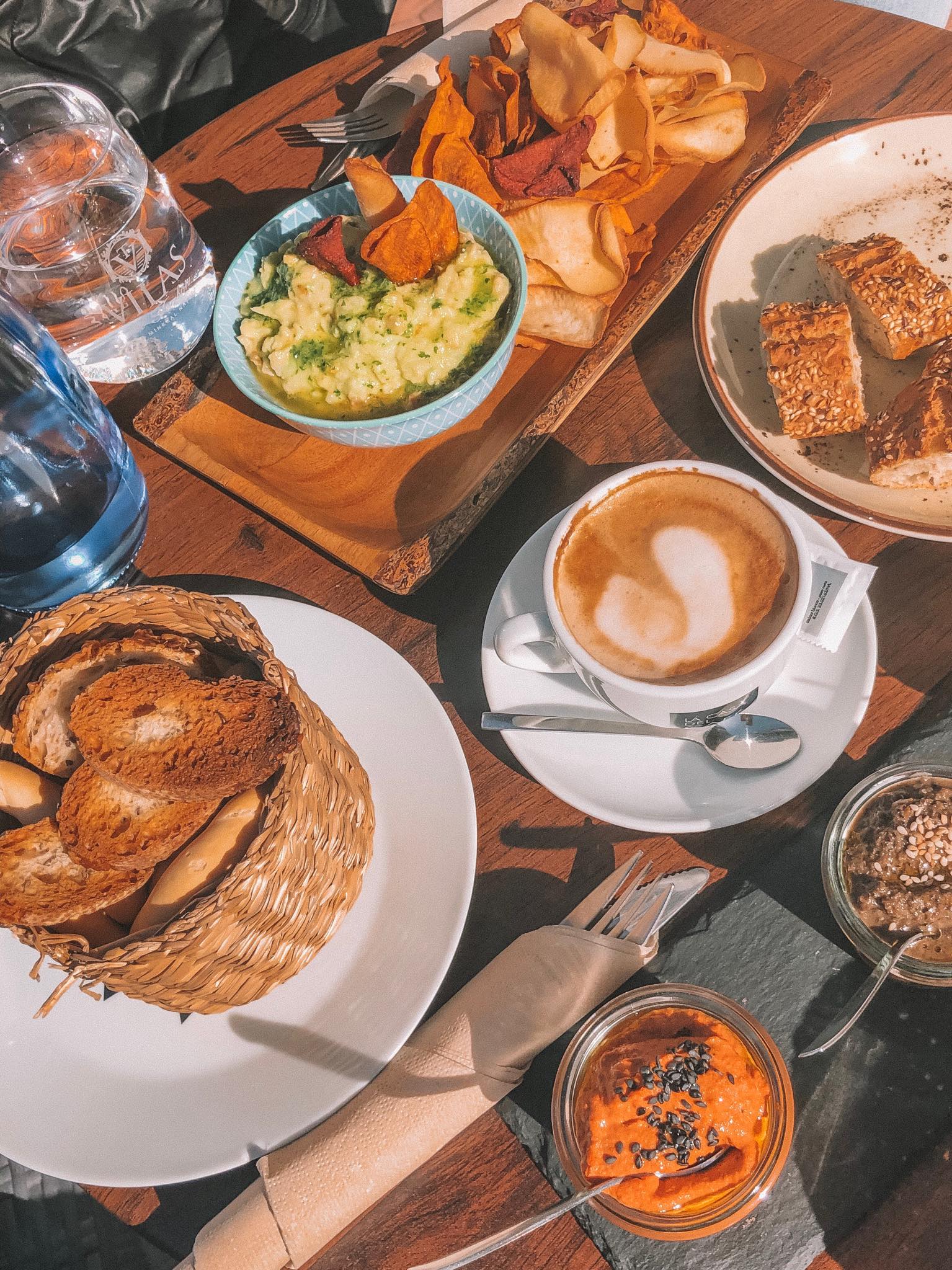
Left to right: A Basque apple and custard cream pastry. From "The Green Spot" in Biarritz. From "Mapa Verde" in San Sebastián.
We’d get back from our activities sometime in the afternoon - which, in Spain, begins at around 6pm - and although Google would tell me that the local grocer closes at 8pm, when I’d go there at 7pm, they’d have finished for the day anyway. A lot of restaurants would close their kitchens until seven or 8pm, and I was so exhausted from the jet lag that I’d give up and go home to sleep, and wake the next two days to repeat this process. Thus I’d reached my first learning curve: la siesta, was, in fact, very much practiced, yet there is no set time, so opening hours aren’t certain even when they’re displayed in-store and on Google - the only thing that wasn’t guesswork was that everything is closed on Sundays.
I’ve now come to learn that la siesta is very much ingrained into Santander’s local culture as much as - or due to - its late night party culture, where tranquila and fiesta meet as the living embodiment of reggaeton. My first experience with the prodigal fiesta came that Saturday evening (11pm, which is night for Australians), where we started the night at Eliza’s house. The concept of “pre-drinking” is not alien to me - actually, due to the fact that drinks cost approximately an arm and a leg in Sydney, it’s quite common for a night out to start with drinks in a private dwelling. Yet, to me, a normal night out starts at around 7pm, where we’d then arrive at our secondary location at around 9pm, and get ready to leave and go to our final location before last entry, and then the subsequent lockout at 1am. I’d always be home, asleep, by 2am at the latest. Flash forward to my first night out in Santander; we didn’t leave Eliza’s until 1am, and we bar-hopped for the next one and a half hours. I begged off at 2.30am, absolutely exhausted, but the others - including European students who thought I was crazy - carried on until beyond dawn.
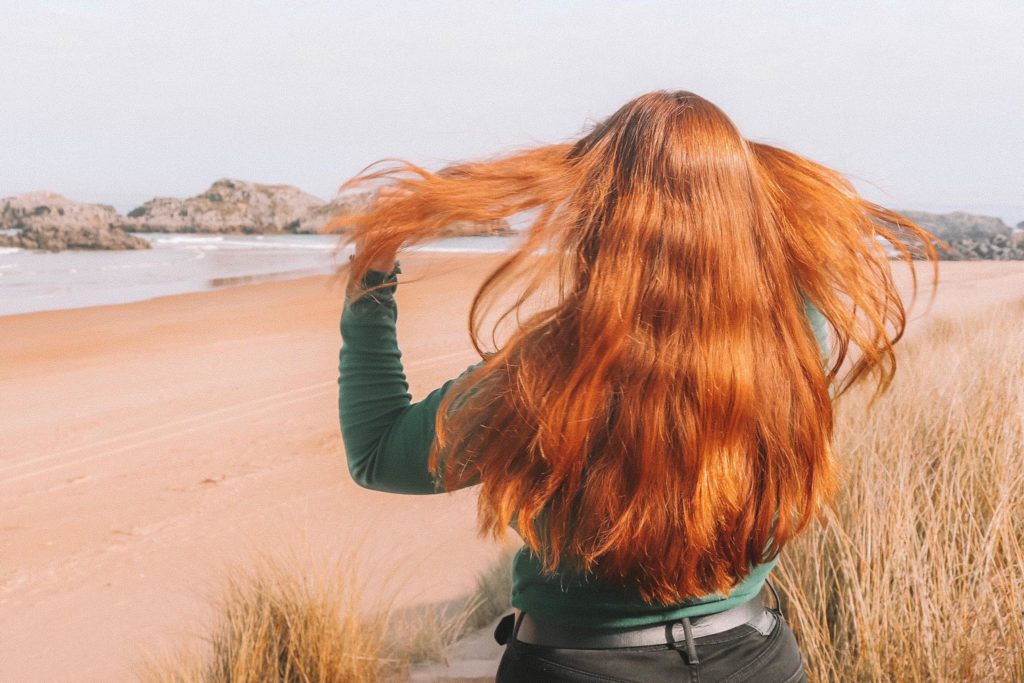
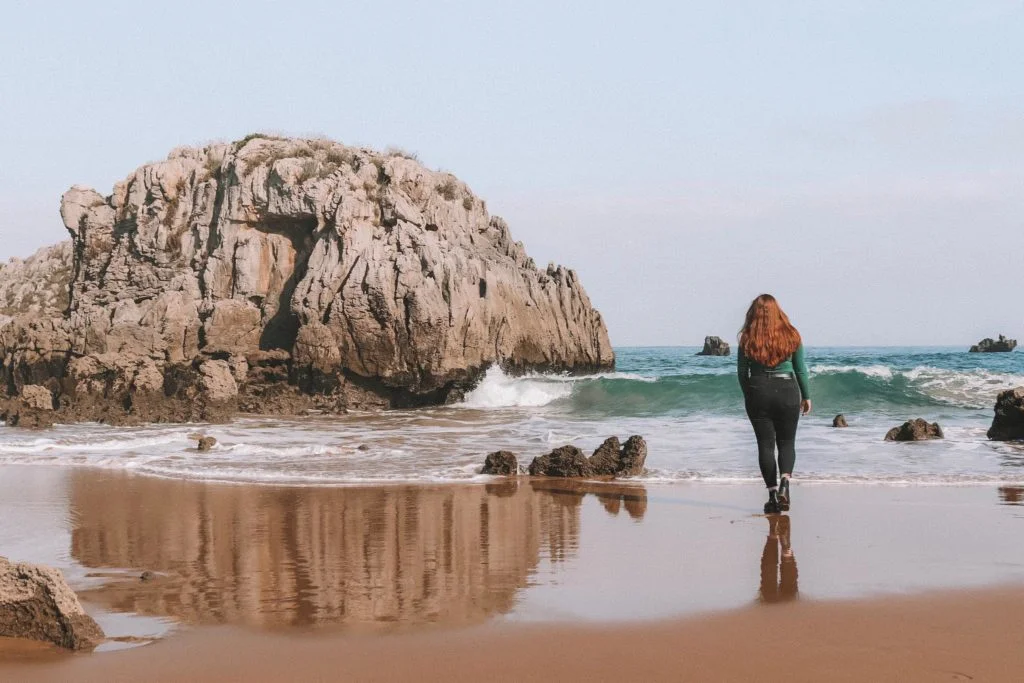
Exploring the beaches at Noja. I'm shook - there aren't snakes in sand dunes here.
Once I got into a routine, the days flew by. This may come as a bit of a shock to those that know me, but in addition to my Spanish language class, I’m also studying “Teaching Physical Education in Primary Education” and “Teaching Music in Primary Education” - three disciplines (teaching, physical activity, and music) that I very much lack talent or intuition in. It’s been difficult to get by as they are taught in Spanish and we are expected, of course, to answer in Spanish, yet the patience and kindness of our classmates and teachers make it all the more bearable. It’s getting easier to have the confidence to try to speak in Spanish, especially around other exchange students - there’s been no judgement about our abilities, as we’re all experiencing the same thing - trying to adjust to life in a strange new world.
The royal women's sitting room in Palacio de la Magdalena.
Strange new world aside, there’s been no shortage of opportunities to indulge in a slice of home in the form of mis amigos australianos. I’ve had the fortune of being visited in Santander by the Logroño girls - Siyumi, Olivia and Eleanor - and by Reagan, who’s currently studying in Zaragoza. Both groups have come bearing gifts of the alcoholic variety - so when I sip La Riojan Crianza and Zaragoza’s Ambar, I feel like I’ve visited their cities too. There’s something comforting about exploring the strange new world with the help of friends, and thanks to them, I got to see Santander’s historic sights - El Sardinero, Palacio de la Magdalena (home to Antena 3’s Gran Hotel), Centro Botín and the sunflower-adorned El Capricho de Gaudí, located in the nearby village of Comillas. I’d like to think that we (Eliza, Jock, and our new Hungarian friend, Anna) have become true locals, considering that we have a regular burger joint (Nobrac - it has some tantalising vegan options), but only time will tell.
The Logroño girls with Anna, Eliza & myself.
I’ve also been able to catch up with some old buds while travelling to new places - trailing through San Sebastián’s Old Town, picking at pinxos and sipping on kalimotxos was only made all the more endearing because I had Alessandra by my side, a presence I had sorely been missing for three months. Flash forward to only a week later, and we were discovering Frankfurt together, alongside fellow Aussies Lachlan and Abbey. Perhaps I’ll even become a quasi-regular of San Sebastián; road-tripping through the northern Spanish and southern French parts of País Vasco drew me back to Borda Berri, home to the most mouth-watering dish I have ever had the pleasure to consume - something called el kebab, but it’s not of the shawarma kind.
Anna, Eliza & myself at Noja.
These six weeks have simultaneously cruised past at an unpredictable speed and crawled by second by second like a timer when you’re doing a plank at the gym - it’s been an interesting ride to say the least. Adjusting to my new life - living out of home for the first time in a foreign country - is still a challenge, but as my PDHPE teachers used to comfort me with: “Slow and steady wins the race.”
A very special thanks to Siyumi Dassanayake & Alessandra McCluskey-Voigt for this post’s title inspiration.








